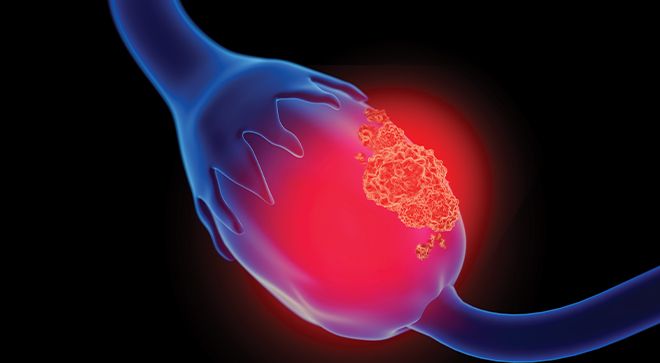Glossary
Glossary:
Progression-free survival: the time a patient lives without their disease spreading or worsening.
Overall survival: the time that a patient lives, regardless of disease status,
News
Article
The BELLA phase 2 clinical trial of relacorilant plus nab-paclitaxel and Avastin among patients with platinum-resistant ovarian cancer has been launched.
The BELLA trial will enroll patients with platinum-resistant ovarian cancer on a regimen of relacorilant plus chemo and Avastin.

BELLA, a phase 2 clinical trial evaluating the efficacy and safety of the regimen relacorilant plus nab-paclitaxel and Avastin (bevacizumab) among patients with platinum-resistant ovarian cancer, has been launched.
The development was announced in a news release from commercial-stage company Corcept Therapeutics Incorporated.
The trial is a single-arm, open-label trial that plans to enroll 90 patients with recurrent, platinum-resistant ovarian cancer at approximately 50 sites across North America, Europe and the Asia-Pacific region, according to the news release, with patients set to receive relacorilant in combination with nab-paclitaxel and Avastin.
Glossary:
Progression-free survival: the time a patient lives without their disease spreading or worsening.
Overall survival: the time that a patient lives, regardless of disease status,
It was previously announced that in the phase 3 ROSELLA trial, patients who received treatment with relacorilant plus nab-paclitaxel had a 30% lower risk of disease progression than those receiving nab-paclitaxel alone, with median progression-free survival being 6.5 months versus 5.5 months, respectively.
Additionally, an interim overall survival analysis showed an improvement with relacorilant, with a median overall survival of 16 months versus 11.5 months for nab-paclitaxel alone.
“In our pivotal phase 3 ROSELLA trial, treatment with relacorilant and nab-paclitaxel improved patients’ progression-free and overall survival, without increasing their side effect burden,” said Bill Guyer, Corcept’s chief development officer, in the news release. “BELLA will examine whether combining relacorilant with two medications—nab-paclitaxel and [Avastin]—will offer patients an additional treatment option.”
The trial, according to its listing on clinicaltrials.gov, is not yet recruiting patients. The trial has an estimated primary completion date of August 2026, and an estimated study completion date of December 2026.
In the trial, according to the listing, patients will receive 150 milligrams of relacorilant orally once daily the day before, the day of and the day after intravenous infusion with nab-paclitaxel, in combination with nab-paclitaxel administered on days 1, 8 and 15 of a 28-day cycle, and Avastin will be administered intravenously once every two weeks on days 1 and 15 of each 28-day cycle, according to the listing.
The listing stated that patients will receive the study treatment regimen until they reach progressive disease, experience unmanageable toxicity or meet other discontinuation criteria, with patients being monitored for treatment efficacy, safety and tolerability.
Relacorilant, as explained by the National Cancer Institute on its website, binds to and blocks glucocorticoid receptor proteins, decreasing the negative effects resulting from excess levels of endogenous glucocorticoids such as those seen when tumors overproduce glucocorticoids. Additionally, inhibition with the drug is intended to inhibit the proliferation of glucocorticoid receptor-overexpressing cancer cells.
Among the other components of the regimen, nab-paclitaxel is a chemotherapy, and Avastin, as explained by the National Cancer Institute, is intended to prevent the growth of new blood vessels that tumors need to grow
Ovarian cancer, according to the news release, is the fifth most common cause of cancer death among women, and patients whose disease returns less than six months after they have received platinum-containing therapy are considered to have platinum-resistant disease.
The median overall survival after recurrence is approximately 12 months under treatment with single-agent chemotherapy. The news release further stated that approximately 20,000 women with platinum-resistant ovarian cancer are considered to be candidates to start a new therapy each year in the United States, with at least an equal number in Europe.
For more news on cancer updates, research and education, don’t forget to subscribe to CURE®’s newsletters here.